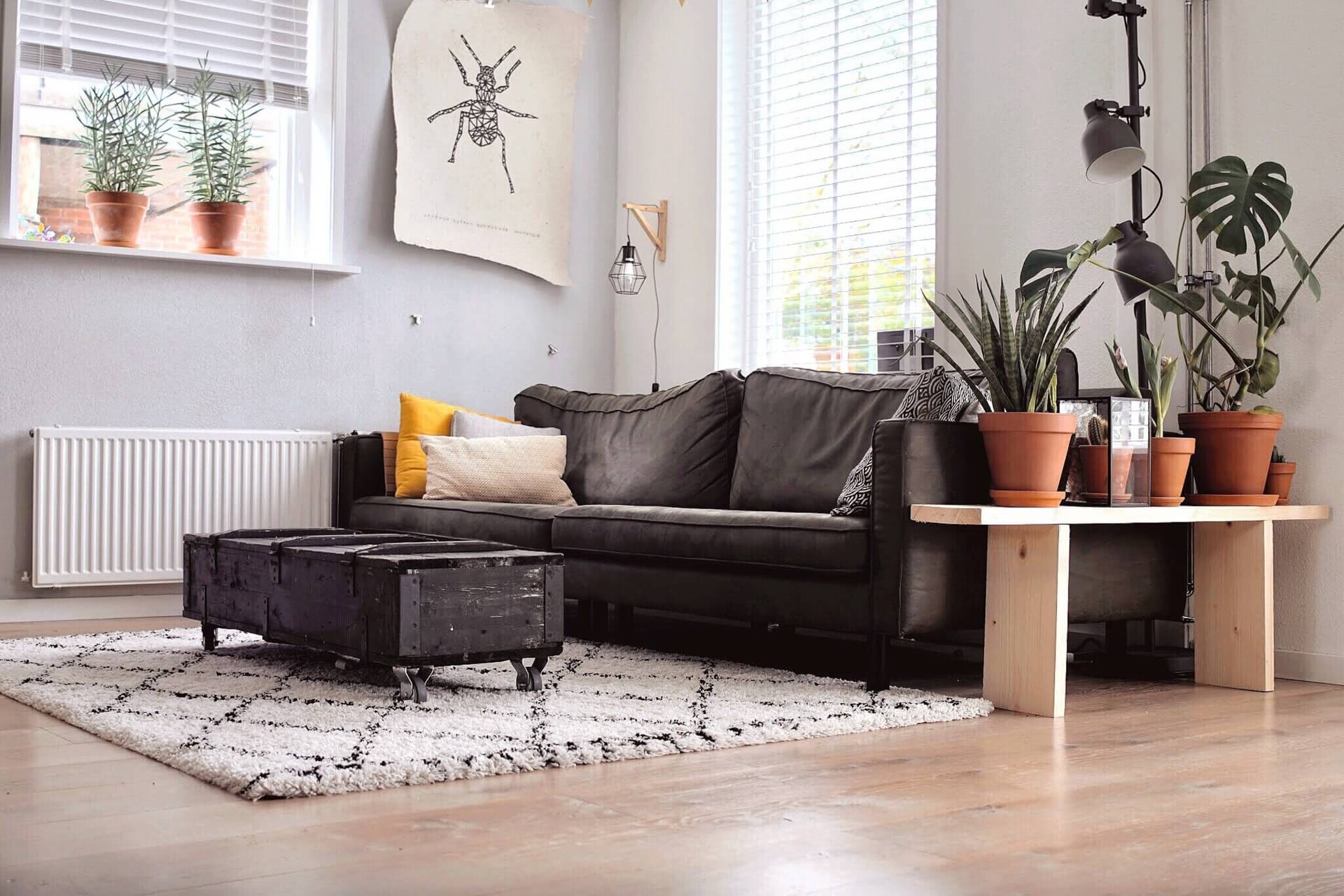The tools you will need to install your vinyl flooring
- Tape Measure
- Utility Knife or Power Saw
- Prybar
- Square Tool
- Rubber Mallet or Hammer and Tapping Block
- Level
Step 1: Allow vinyl flooring to acclimate in the room where it is being installed
Place the flooring materials in the area that they are going to be installed in at least 48 hours before installation so that they can acclimate to the temperature and humidity of the room. This step will prevent unnecessary warping of materials.
Step 2 (optional): Remove baseboards
For the cleanest look, remove all baseboards in the room by cutting through any paint around the seams of the baseboard (if present) with a utility knife, and then gently remove the baseboards with a pry bar. If you choose to not remove baseboards before the installation, you need to leave a ¼” gap between the newly installed flooring and the baseboards. Caulking or quarter-round pieces can be used to cover this gap after the flooring is completely installed.
Step 3: Prepare the subfloor
To achieve the greatest end result, ensure that the surface you are installing the flooring on is clean of all debris and completely level before you begin your installation. If the existing flooring offers a level surface then you can install the new vinyl planking overtop after the surface has been properly cleaned. If the existing flooring does not offer a level surface, then remove any existing layers of flooring down to the subfloor or concrete. Or, you can use leveling putty or some other method to create a level surface for the vinyl planking to be installed on.
Step 4: Installing the underlayment
Follow the specific directions found on your underlayment to ensure that it is installed properly before proceeding to install the vinyl planking.
Step 5: Installing the first row of vinyl planking
Remove the tongues from your first row of planks with your utility knife or power saw. If using the utility knife, you can score a line down the edge of the tongue and snap it off of the plank. Then, lay the first plank of this first row of flooring along the edge of your starting wall. Ensure that this first plank rests in the corner of the starting wall and the wall to its left (if working from left to right). Leave a ¼” of space between the plank and both walls to account for any potential expansion and warping of the boards (remember to leave this ¼” of space between every plank and every wall in the installation area). Then, hold the next plank at an angle over the first planks end and snap the two together. Repeat this process for each additional plank that you add. When you reach the last plank, cut it to size with either a power saw or by scoring a line with a utility knife and snapping it.
Step 6: Installing the additional rows of vinyl planking
To continue installing the next rows of vinyl flooring, stagger the planks of each additional row with the planks of the last row by about 6 inches. Snap the planks into place with the same method described in Step 5, but start by snapping the short ends first, then the long ends. When reaching the final row, cut the planks vertically to fit the space with either the scoring method mentioned in the previous steps or with a power saw
Step 7: Reinstall baseboards or install caulking or quarter round
If you removed the baseboards, reinstall them now. If you did not remove the baseboards, install the necessary caulking or quarter round to hide the seam between the flooring and baseboards or wall.
Carpet Center can help you with any flooring project. Call us today for fast, reliable service!

